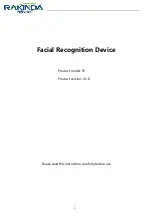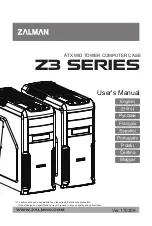
-7-
2. SELECT THE SHADE NUMBER
RECOMMENDED SETTINGS
REFERENCE ANSI Z49.1-2005
9
8
7
6
10
Shade 8
Shade 5
Shade 9
Shade 10
Shade 11
Shade 12
Shade 13
Shade 14
Shade 15
Shade 11
Shade 12
Shade 13
Shade 14
Shade 12
Shade 14
Shade 15
Shade 11
Shade 13
Shade 12
Shade 11
Shade 10
Shade 14
The shade numbers can be selected by turning
the knob on the Filter.Set the switch to "Grind"
position for grinding applications.The filter will stay
at Shade Number 4 and not react to any welding
arcs.
(Fig.4)
(Fig.5)
The solar unit automatically switches
ON when exposed to light.
Two ranges of shade numbers, 5-9 and 9-13 are
available in the dark state(Fig.5).
ON/OFF
3.
DELAY TIME
4.SELECT SENSITIVITY
This welding helmet is featured with
continuously adjustable delay time control. The
lens will lighten in 0.1 to 1.0 seconds upon
ambient temperature and shade
setting.
By
turning the DELAY knob (Fig.6)
clockwise, the delay time will increase from 0.1
seconds to 1.0 seconds.
Turn
Knob
counter-clockwise for tack welding or
production welding with short welds.
Turn
Knob
clockwise for welding at high
amperage where there is an after glow from the
welding.
-8-
MAKE SURE that the “Grind/Weld” switch is on
“Weld” position before starting to weld(Fig.4).
MAKE SURE to set the "Grind/Weld" switch
back to "Weld" postion after grinding.
This welding helmet is featured with continuously
adjustable sensitivity control knob. Sensitivity is a
setting of how sensitive this helmet is responding
to the welding arc.
Turn knob clockwise to increase the sensitivity
(Fig.7).
Scenario may need to increase:
1) Low amperage welding
2) Used for DC TIG welding
Turn knob counter-clockwise to decrease the
sensitivity (Fig.7).
Scenario may need to decrease:
1) High ambient light
2) Interference exists
Adjust sensitivity setting to properly condition
according to the application and the environment.
(Fig.6)
(Fig.7)


























